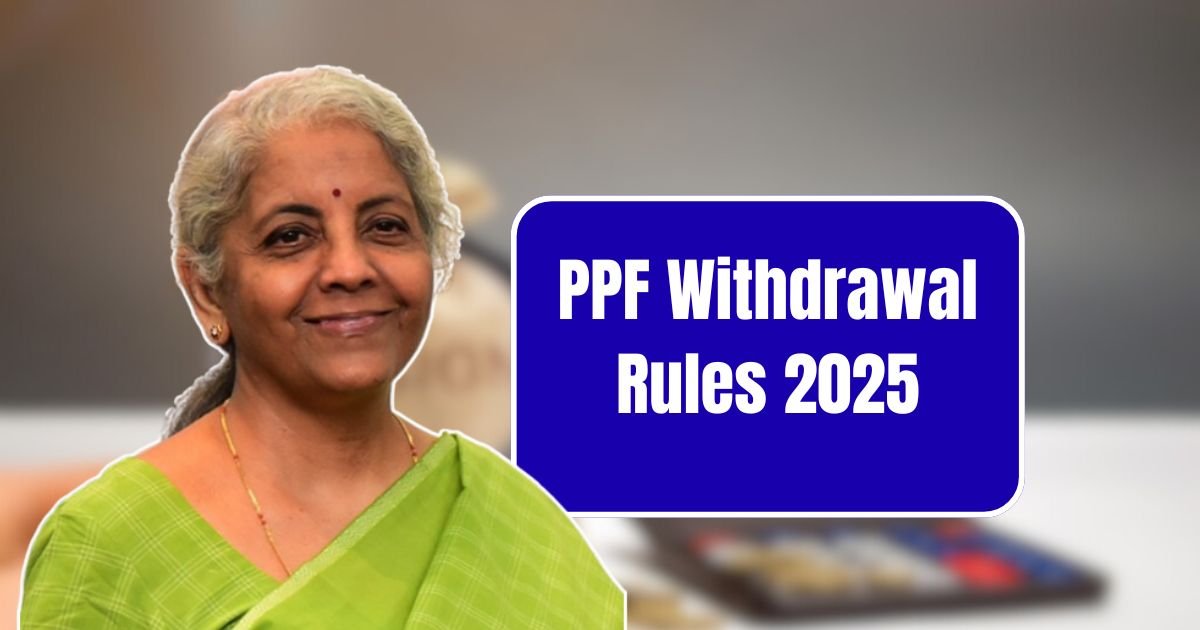Imagine a savings scheme that not only guarantees your future but also allows you to access it when you need it. The Public Provident Fund (PPF) does this by providing you with long-term wealth creation coupled with tax-free returns. PPF continues to serve as a stronghold for conservative investors in 2025 as it is still sponsored by the Government of India. Knowing the withdrawal rules of PPF is critical in fully utilising its advantages. This article explains the most recent rules regarding PPF withdrawals for 2025 so you can take control of your finances.
What Makes PPF Remains Indispensable
PPF is attractive for a long-term investment due to the returns being guaranteed as well as tax-free. The interest rate of 7.1% per annum for Q2 (July-September) 2025 makes it a no-risk investment for a habitual saver. Contribution of up to ₹1.5 lakh in a year qualifies for deductions under Section 80C. The interest earned on it is also exempt from tax. Withdrawals, both partial and full, do not attract tax making PPF a preferred option in tax planning for the long term.
Completing Full Withdrawal After Maturity
The maturity period for PPF accounts is fifteen years. After this period, account holders can withdraw the entire amount which includes both the principal and the interest without any penalties. For example, accounts opened in 2010 will mature in 2025 which allows for full withdrawal. To withdraw, one needs to submit Form C (or Form 3 in some banks) along with the PPF passbook to the bank or post office. The amount is transferred to the linked savings account which is hassle free.
Withdrawal Flexibility – Partial
Account holders can access funds prior to the maturity period; however, withdrawals are subject to certain restrictions. Partial withdrawals are allowed after 5 years from the date the account was opened. The account holder can withdraw 50% of the remaining balance after the 4th year. For example, if the balance is ₹5 lakh in 2021, one can withdraw ₹2.5 lakh in 2025. There is a limit of one partial withdrawal per year which balances immediate access to funds with the need to save for the long term.
Conditions For Premature Closure
In emergencies like medical situations or urgent educational needs, premature closure is permissible after five years. Nonetheless, a 1% penalty on total interest earned shall be incurred. Medical certificates, alongside Form C, justify closure. This policy ensures that the PPF account continues to function as a disciplined savings asset, while simultaneously providing necessary relief in times of crisis.
Further Extensions To Your PPF
You may append your PPF account after maturity in five-year increments, with or without further contributions. With no contributions, the account continues to earn interest. However, only one withdrawal is permitted annually for the remaining balance after the account has matured in value. With contributions, submit Form H within one year after maturity to continue deposits. A maximum of 60% withdrawal of the balance at the time of extension is permitted during the five-year period.
Streamlined Withdrawal Process
Withdrawal for PPF in 2025 is simple. C Forms are available at banks and post offices. Simply enter your details and the amount you wish to withdraw, then submit the passbook. Starting July 27, 2025, Aadhaar-based eKYC will allow for paperless transactions and streamline the withdrawal and deposit process. While processing times differ, having the right documents ensures faster access to the funds.
Key PPF Withdrawal Rules 2025
| Aspect | Details |
|---|---|
| Full Withdrawal | After 15 years, entire balance can be withdrawn without penalties. |
| Partial Withdrawal | After 5 years, up to 50% of balance at end of 4th year or prior year. |
| Premature Closure | After 5 years, for medical/education needs, with 1% interest penalty. |
| Extension Withdrawal | 60% of balance at maturity over 5 years, one withdrawal per year. |
| Process | Submit Form C with passbook; Aadhaar eKYC available from July 27, 2025. |
PPF’s withdrawal rules provide both control and flexibility. Whether it’s for retirement or the possibility of unplanned costs, knowing these rules allows you to maximise PPF in 2025.
Also Read: LIC Smart Pension Plan 2025: A New Era Of Retirement Security Begins


